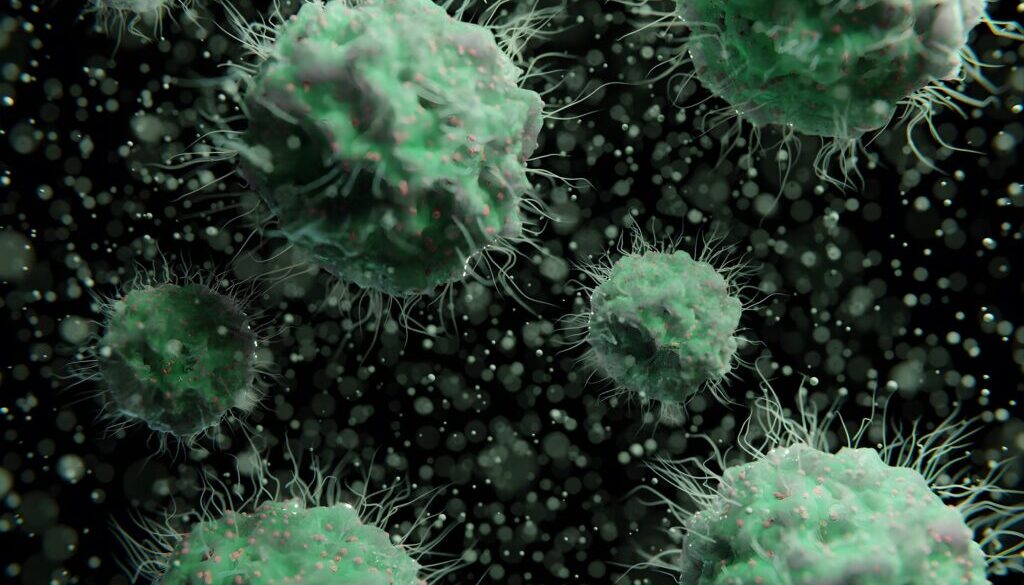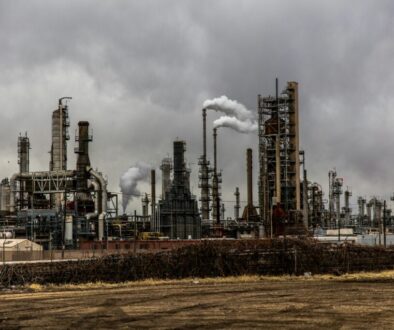Microbes to the rescue? Companies probe PFAS cleanup solutions
By Lydia Larsen
Tim Repas was tired of hauling dirt to landfills. As an environmental consultant in Canada’s oil fields, where the soil is often laden with health-harming petroleum hydrocarbon chemicals, Repas felt he spent too much time moving contaminated soil around and not enough time trying to eliminate the dangers posed by the compounds.
In 2019, he left the fields and put his degree in biochemistry to work, founding Fixed Earth Innovations, a company aimed at employing biological systems to address environmental challenges. One of the company’s first targets: The persistent and pervasive class of chemicals known as per- and polyfluoroalkyl substances (PFAS).
PFAS are widely used, including in firefighting foam, stain and water-resistant coatings and food packaging, and are ubiquitous in the environment, making exposure almost impossible to avoid. Some types of PFAS have been linked to health defects including cancer, reproductive problems and birth defects.
Making PFAS even more problematic is the fact that they are considered virtually impossible to break down, earning the moniker “forever chemicals.”
“We could spend 20 years trying to solve [the problem], but I don’t think we have 20 years to solve PFAS,” said Repas said.
The need to find tools to address PFAS contamination in the United States was made more urgent last spring when the Environmental Protection Agency (EPA) announced new limits on two types of common PFAS in drinking water. Utilities required to meet these new standards are left to mostly rely on technologies that can remove PFAS from drinking water, but don’t actually destroy the compounds.
But researchers say hope is on the horizon. Emerging evidence suggests that microbes, small organisms invisible to the naked eye found in soil, air, water and even the human body, may be able to assist in breaking down PFAS.
Recent research shows that certain bacteria can break apart the strong carbon and fluorine bonds in PFAS compounds.
This progress occurs as Fixed Earth Innovations moves forward with its own microbe-based solution that relies on organisms that already exist on or near specific contaminated sites.
Although academic researchers stress that this type of technology isn’t ready for wide scale use, Fixed Earth Innovations believes they’re getting closer to commercializing a bioremediation technology that has been successful in field trials.
An “army of microbes”
The need for PFAS cleanup poses a vast challenge. Scientists estimate that PFAS contaminates at least 45% of the tap water in the United States. Soil across the country is also contaminated by PFAS-containing firefighting foam, municipal sewage spread across farm fields and manufacturing plants.
The available options for remediating PFAS don’t completely destroy them. At the moment, the closest thing to actually breaking down the myriad of chemicals is incineration, but researchers and advocates criticize this method because some PFAS chemicals remain after incineration and the byproducts can generate their own health and environmental issues.
Placing PFAS in a specialized landfill is another option, though the contaminants will either remain there forever or eventually leach out into the surrounding area. Another popular option involves injecting the chemicals underground.
Microbe-based approaches are different – they could completely destroy PFAS.
“At the end of the day, [microbes] are the only solution in some sense,” said Lawrence Wackett, a professor at the University of Minnesota who studies biodegradation.
Still, PFAS chemicals are not easy for bacteria to break down. Since there are thousands of different PFAS chemicals, each with their own structure, it’s almost impossible to find one type of bacteria that can attack every chemical within this group, according to Yujie Men, a professor at the University of California-Riverside who studies PFAS biodegradation.
“You may want to find an army of microbes,” Men said. “Each soldier is going to take care of one type.”
Bacteria have been used to break down chemical contaminants since the 1970s, first for oil spills and later for a variety of toxic substances. Researchers have found that bacteria can break down perchlorate, found in rocket fuel, certain types of pesticides, and toxic heavy metals.
When microbes are able to successfully degrade a contaminant, it’s often because it contains chemicals the microbes need to function, said Wackett, who has watched for years as reports emerged that bacteria can break down chemicals researchers considered permanent.
Unlike these other contaminants, PFAS don’t have anything microbes can use, plus they contain fluorine, which is poisonous to bacteria.
Men and her team identified a possible enzyme that could help microbes get around the fluorine problem. This could enable bacteria to break down PFAS – but they still need a channel for the byproducts to leave their cells, otherwise the microbes will die.
“Natural evolution basically never had to deal with PFAS in billions of years of life,” Wackett said. “They never saw the fluoride levels that they will generate when breaking down PFAS.”
First field trials
In his work for Fixed Earth Innovations, Repas and colleagues identified one microbe that was able to survive in the presence of PFAS, then a few others, seeking out microbes that are already present in the environment near a contaminated site so that the company can select microbes they already know will thrive there.
Fixed Earth Innovations has not released the species of microbes used in their remediation processes, citing trade secrets.
The company’s strategy also involves partnering microbes with an absorbent material made by the Wisconsin-based Orin Technologies, which holds contaminants in place while the microbes do their job. Additionally, Fixed Earth Innovations developed a creative solution to help the microbes breathe as they work deep in the soil, generating oxygen through a chemical reaction and electrical pulses.
Eventually, to run their first trial of the microbe mix, the state of Michigan granted the researchers a small plot of land just over 2,000 square feet on a site contaminated by PFAS-containing firefighting foam in Alpena, Michigan. In the year after the site was treated with the microbes, PFAS contamination was reduced by 92%, tests later revealed.
Following the first field trial in Michigan, Fixed Earth Innovations and Orin set up a test site at Dane County Airport in Madison, Wisconsin, which was also contaminated with PFAS from firefighting foam. The microbe system removed 97% of the site’s PFAS over the course of nine months, according to a press release from the Wisconsin Department of Military Affairs and the Dane County Regional Airport.
Repas and Orin Solutions President Larry Kinsman said they believe their technology will be ready to deploy on a wide scale in a few years. But both Wackett and Men say that while progress is being made, much more research must be done before microbe-based PFAS cleanup technologies can be deployed at scale.
“Right now, I would say it’s too early,” Men said. “They are not ready to be used, and I really want to emphasize this point.”
To ensure that the job is done, researchers need to verify that the PFAS is fully degraded and that the products of the treatment don’t pose their own problems, Men said.
Repas is aware there is plenty of skepticism surrounding his company’s technique for tackling PFAS pollution.
“I welcome skeptics, as long as they’re willing to hear our side of the story,” Repas said.
(Featured image via Unsplash+ in collaboration with Osarugue Igbinoba.)
 EWG
EWG


